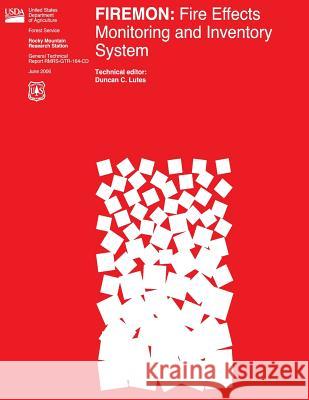Firemon: Fire Effects Monitoring and Inventory System » książka
Firemon: Fire Effects Monitoring and Inventory System
ISBN-13: 9781480146198 / Angielski / Miękka / 2012 / 412 str.
Monitoring and inventory to assess the effects of wildland fire is critical for 1) documenting fire effects, 2) assessing ecosystem damage and benefit, 3) evaluating the success or failure of a burn, and 4) appraising the potential for future treatments. However, monitoring fire effects is often difficult because data collection requires abundant funds, resources, and sampling experience. Often, the reason fire monitoring projects are not implemented is because fire management agencies do not have scientifically based, standardized protocols for inventorying pre- and post-fire conditions that satisfy their monitoring and management objectives. We have developed a comprehensive system, called the Fire Effects Monitoring and Inventory System (FIREMON), which is designed to satisfy fire management agencies' monitoring and inventory requirements for most ecosystems, fuel types, and geographic areas in the United States. FIREMON consists of standardized sampling methods and manuals, field forms, database, analysis program, and an image analysis guide so that fire managers can 1) design a fire effects monitoring project, 2) collect and store the sampled data, 3) statistically analyze and summarize the data, 4) link the data with satellite imagery, and 5) map the sampled data across the landscape using image processing. FIREMON allows flexible but comprehensive sampling of fire effects so data can be evaluated for significant impacts, shared across agencies, and used to update and refine fire management plans and prescriptions. The key to successful implementation of FIREMON requires the fire manager to succinctly state the objectives of the proposed fire monitoring project and accurately determine the available monitoring or inventory project resources. Using this information, the manager uses a series of FIREMON keys to decide the sampling strategy, methods, and intensity needed to accomplish the objectives with the resources on hand. Next, the necessary sampling equipment is gathered and dispersed to sampling crews. Field crews then collect FIREMON data using the detailed methods described in this FIREMON documentation. Collected data are then entered into a Microsoft(r) Access database. These data can be summarized, analyzed, and evaluated using the set of integrated programs developed specifically for FIREMON. FIREMON has a flexible structure that allows the modification of sampling methods and local code fields to allow the sampling of locally important fire effects evaluation criteria.











